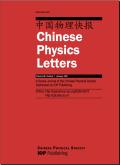A Triplet Resonance in Superconducting Fe1.03Se0.4Te0.6.
IF 3.5
2区 物理与天体物理
Q1 PHYSICS, MULTIDISCIPLINARY
引用次数: 0
Abstract
From heavy fermion compounds and cuprates to iron pnictides and chalcogenides, a spin resonance at is a staple of nearly magnetic superconductors. Possible explanations include a two-particle bound state or loss of magnon damping in the superconducting state. While both scenarios suggest a central role for magnetic fluctuations, distinguishing them is important to identify the right theoretical framework to understand these types of unconventional superconductors. Using an inelastic neutron scattering technique, we show that the spin resonance in the optimally doped Fe1.03Se0.4Te0.6 superconductor splits into three peaks in a high magnetic field, a signature of a two-particle S=1 triplet bound state.
超导 Fe1.03Se0.4Te0.6 中的三重共振。
从重费米子化合物和铜氧化物到铁锑化物和铬化物,ℏ Ω 0 ∝ k B T c 处的自旋共振是近磁超导体的主要特征。可能的解释包括双粒子束缚态或超导态中磁子阻尼的丧失。虽然这两种情况都表明磁波动起着核心作用,但区分它们对于确定正确的理论框架以理解这些类型的非常规超导体非常重要。我们利用非弹性中子散射技术表明,在高磁场中,最佳掺杂 Fe1.03Se0.4Te0.6 超导体的自旋共振会分裂成三个峰值,这是双粒子 S=1 三重结合态的特征。
本文章由计算机程序翻译,如有差异,请以英文原文为准。
求助全文
约1分钟内获得全文
求助全文
来源期刊

Chinese Physics Letters
物理-物理:综合
CiteScore
5.90
自引率
8.60%
发文量
13238
审稿时长
4 months
期刊介绍:
Chinese Physics Letters provides rapid publication of short reports and important research in all fields of physics and is published by the Chinese Physical Society and hosted online by IOP Publishing.
 求助内容:
求助内容: 应助结果提醒方式:
应助结果提醒方式:


